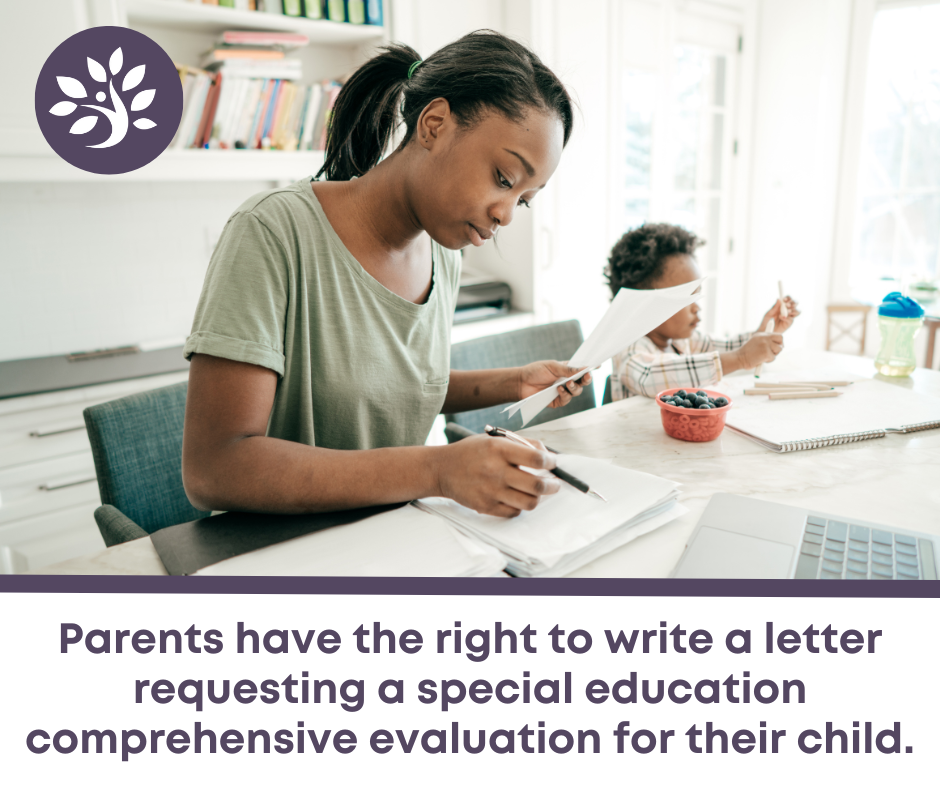 Often the child’s teacher will notice the first symptoms of a Specific Learning Disability. Parents may also notice symptoms that are different from those the teacher sees. That’s why it is so important for teachers and parents to share notes on the development of a child. These conversations may lead to an evaluation for a diagnosis of SLD and eligibility for special education services.
Often the child’s teacher will notice the first symptoms of a Specific Learning Disability. Parents may also notice symptoms that are different from those the teacher sees. That’s why it is so important for teachers and parents to share notes on the development of a child. These conversations may lead to an evaluation for a diagnosis of SLD and eligibility for special education services.
Symptoms teachers might observe:
- trouble learning the connection between letters and sounds,
- confuses basic words like run, eat, want,
- makes consistent reading and spelling errors including letter reversals (b/d), inversions (m/w), transpositions (felt/left), and substitutions (house/home),
- experiences difficulty learning basic math concepts, and/or
- difficulty with prefixes, suffixes, root words and other spelling strategies.
Symptoms parents might observe:
- difficulty following directions or learning routines,
- dreads going to school,
- problems doing homework,
- takes a long time to learn new skills,
- trouble learning numbers, alphabet, days of the week, colors and shapes, and/or
- difficulty keeping up with papers or assignments.
Some children with Specific Learning Disabilities may also have ADHD. Symptoms might include:
- fidgets excessively; has difficulty remaining in seat,
- is easily distracted,
- has difficulty following instructions,
- shifts from one activity to another,
- has difficulty playing quietly,
- talks excessively; interrupts,
- doesn’t appear to listen when someone is talking to him or her, and/or
- frequently loses things necessary for tasks/activities at school/home.
Learn more about the signs of a learning disability by age.
At some point the child may be given help in a Response to Intervention Process (RTI). RTI provides early intervention and academic supports to children who are having difficulty in the general education classroom. Each school may have a different way of implementing RTI, but parents should always be involved in the process.
Parents need to know that according to Federal law, the Individuals with Disabilities Education Act (IDEA), parents have the right to write a letter requesting a special education comprehensive evaluation for their child. A LDA Sample Letter for Right to an Evaluation can be found on our site. It should be sent to the school principal with a copy to the Director of Special Education.
Learn more about the right to an evaluation of a child for special education services.
After a child is found eligible for special education services, parent(s) will meet with the school team to develop an Individualized Education Program (IEP). Based on the child’s Present Levels of Performance, a plan will be developed for the special education teacher to teach the child using special techniques. The plan will also include instructional methods to be used in the general education classroom. The special education teacher monitors student progress and uses that data to redesign the program to develop an approach to help the student learn and achieve the goals written in the IEP.
Specific Learning Disabilities are brain-based. They are often complex and for both parents and school personnel are not easy to understand or resolve. Some schools prefer to have all children, including children with disabilities, taught in the general education classroom with the special education teacher co-teaching with the general education teacher. This system is called “inclusion.” It is thought by some that children with learning disabilities respond well in this system. However, it is important for parents and teachers to know that many more may not learn and progress. There are many children with specific learning disabilities and/or ADHD that may need to have special education services using intense, direct, explicit instruction, delivered in a special education classroom, one to one or in small group instruction. Parents have the right to request that their child is taught in that setting.
Every two to three weeks, teachers should test the child and compare the child’s progress to the Present Levels of Performance listed on the IEP. This provides information for the parents and school team on the child’s progress. As the child progresses, new goals and objectives are written in the plan and this process is continued until the child reaches grade level. Some children need continued Special Education services to assist with organizational problems and to provide ongoing support with reading, math, written language, and homework. This is important to keep the child from once again falling behind.
Parents and teachers working together and comprehensive special education services are the secret to success for many children with specific learning disabilities.
Author: Patricia Lillie, Past President and Parent Advocate
Learning Disabilities Association of America


